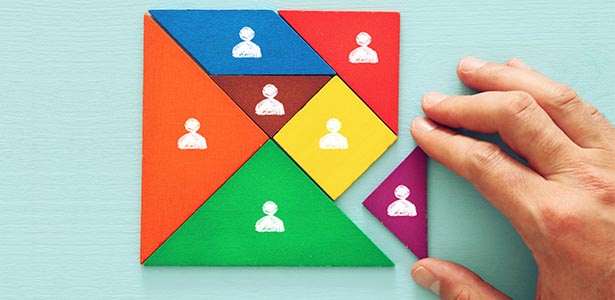
This article is part of a larger collection titled
The MDRT Hiring Guide.
Section 1: Hiring and retaining talent
- When is it time to hire a new employee?
- How hiring employees can save you money
- Commit to strategic hiring and avoid these four landmines
- Hiring the right staff to fit your needs is essential
- Pre-employment assessments deepend insight into job candidates
- Categorizing employees: Should you hire a lion, beaver, otter or golden retriever?
Section 2: Employee compensation and motivation
- Training and compensating junior advisors
- Developing, compensating and retaining a protege
- Design a simple bonus plan
- Knowing what employees want encourages long-term commitment
- Reduce turnover and encourage your staff with authentic appreciation
- Get employees with performance issues back on track
- Non-monetary approaches to engaging staff
Section 3: Employee processes/managing employees
- The three components every employee handbook should have
- Evaluating employee performance
- Coaching vs. micromanaging to bring out the best in staff
- How effective leaders respond when employees make mistakes
- Build an environment of trust by following three steps
- Be a better listener to engage your employees
- Encouraging employee input can boost your bottom line
How do you identify a person’s personality type during a job interview? How do you understand how well they will fit with the team? Chances are, you won’t know without some kind of evaluation, testing or scorecard. There are many different options for advisors who want to know more: Myers-Briggs, TrueColors, DISC or Kolbe.
David Meszaros, CFP, a 12-year MDRT member from High River, Alberta, Canada, however, has seen a lot of success in using a personality test that gives candidates a series of words to choose from that they feel best describe themselves. Based on which words the person highlights, the output from the scorecard provides a preliminary indication of one of four primary personality types:
- Lion (good at making decisions and very goal-oriented)
- Beaver (organized and process-oriented)
- Otter (very social, loves people and having fun)
- Golden retriever (easygoing, loyal, good at making friends)
Applying the animal to the job
Of course, most people have characteristics of each animal, and Meszaros has chosen to only use this at the beginning of the interview process to help him with his questions. While he identifies himself as a lion and manages three people in his office, he has benefited from this assessment process, as it has improved the way he searches for a new hire.
This does not mean that he automatically, for example, matches someone who tests as a beaver to a job working on spreadsheets. Again, people are multi-faceted. Yet, as Meszaros said, someone whose dominant characteristic is an outgoing personality (perhaps an otter or a lion) may not be the right person to crosscheck numbers in Excel.
“Two golden retrievers would have no problem working well together, but it’s not normally the case with two lions,” he said. With the help of a coach, Meszaros now develops a clear understanding of what each of the roles are in his organization (including the new one for a new employee), then pursues the right type of person to fit that role.
When a beaver dam needs a lion
When I jokingly ask if he has ever considered a literal approach to the interview — say, providing sticks and seeing if the candidate would build a dam to prove they’re a beaver — Meszaros corrected me. In fact, a lion would take charge of building the dam; a beaver would identify if fewer sticks were needed to build a dam the day before and adjust the process.
“When I think of a beaver, I think consistently hardworking at mundane tasks,” he said. “But can they take the sticks and take the lead at putting them together?”

